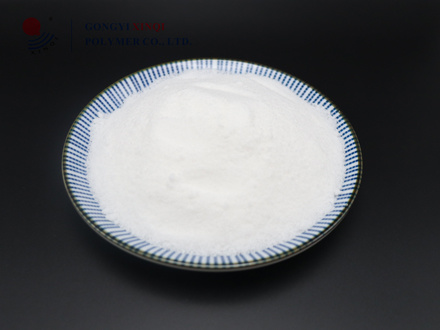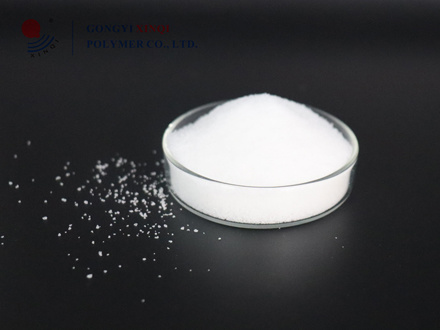Selection of polyacrylamide for sludge dewatering
Release time:
Dec 25,2023
Polyacrylamide used for sludge dehydration is generally cationic. According to the level of ion density, cationic polyacrylamide is divided into three types: weak cation, medium cation and strong cation. In practice, most of them are used. The higher the ion density, the stronger the effect of neutralizing negative charges on destabilizing sludge colloidal particles. However, cationic polyacrylamide with high ion density often has a smaller molecular weight and weaker adsorption and bridging ability. Therefore, the sludge conditioning effects of the above three types of cationic polyacrylamide are generally similar. The type and dosage of polyacrylamide during the sludge dehydration process and the dryness of the mud cake after dehydration vary depending on the type of sludge. Therefore, various types of cationic polyacrylamide products must be tested and selected.
Sludge dehydration using cationic polyacrylamide can be divided into natural drying dehydration and mechanical dehydration.
The two sludge dewatering methods have their own emphasis, and both require the use of polyacrylamide.
Natural drying and dehydration refers to placing sludge in a drying square to achieve dehydration through evaporation, infiltration and clear liquid overflow. This method is prone to producing odor and breeding diseases.
Mechanical dehydration is currently the main method of sludge dehydration in my country. Filter presses and other equipment are mainly used to dehydrate sludge. During this period, cationic polyacrylamide water treatment agents are used to speed up dehydration efficiency.
The water treatment agent often used for sludge dehydration is cationic polyacrylamide CPAM. Depending on the different conditions of the sludge, cationic polyacrylamide CPAM with different ionic degrees is selected for dehydration treatment. Its working principle is to use the positive charges attached to the cationic polyacrylamide molecular chains to neutralize the negative charges in the sludge colloidal particles to accelerate sludge aggregation. At the same time, it uses long molecular chains to entangle the sludge particles together. It is mainly used in The compressed electric double layer effect and adsorption bridging effect of cationic polyacrylamide.


The difference between anionic and cationic polyacrylamide
We know that polyacrylamide is divided into cationic polyacrylamide and anionic polyacrylamide according to its characteristics. Normally used cationic polyacrylamide is divided into product specifications by ionicity, while anionic polyacrylamide is divided into product specifications by molecular weight. Through the relationship and area between the molecular weight and ionicity of polyacrylamide in the previous article, we can understand the relationship between molecular weight and ionicity. Relationship, this is also one of the differences between anionic polyacrylamide and cationic polyacrylamide.
1. Appearance:
From the appearance, there is almost no difference. They are all white particles or powdery objects. To distinguish them, they can only be distinguished through small experiments!
2. Differences in use:
1. Usage of cationic polyacrylamide:
Sludge dehydration, water treatment flocculants in water plants, oil field chemicals, papermaking auxiliaries;
2. Applications of anionic polyacrylamide:
Industrial wastewater treatment, drinking water treatment, recovery of lost starch grains from starch plants and alcohol plants.
3. Molecular weight difference:
1. The molecular weight of cationic polyacrylamide is generally 5 million to 12 million.
2. The molecular weight of anionic polyacrylamide is generally 8 million-2000.
Anionic polyacrylamide is more common in treating wastewater, while cationic polyacrylamide mainly treats sludge dehydration. The main function of cationic polyacrylamide is to flocculate negatively charged colloids, with functions such as turbidity removal and decolorization. It is suitable for wastewater with high organic colloid content, such as industrial wastewater such as dyeing, papermaking, food, and aquatic product processing, as well as urban sewage treatment. Sludge dehydration in the process, etc. The activated sludge treatment method is commonly used in urban and industrial sewage. Biochemical sludge is often a highly hydrophilic colloid, and the water contained in it is extremely difficult to remove. If a cationic pam flocculant is used, good dehydration effects can be achieved.
Related News
Nov 06,2025
Nov 06,2025
polyacrylamide suppliers in egypt
Sep 28,2025
polyacrylamide suppliers south africa
Sep 28,2025
polyacrylamide suppliers in india
Sep 28,2025
Polyacrylamide Supplier in Malaysia
Sep 28,2025

